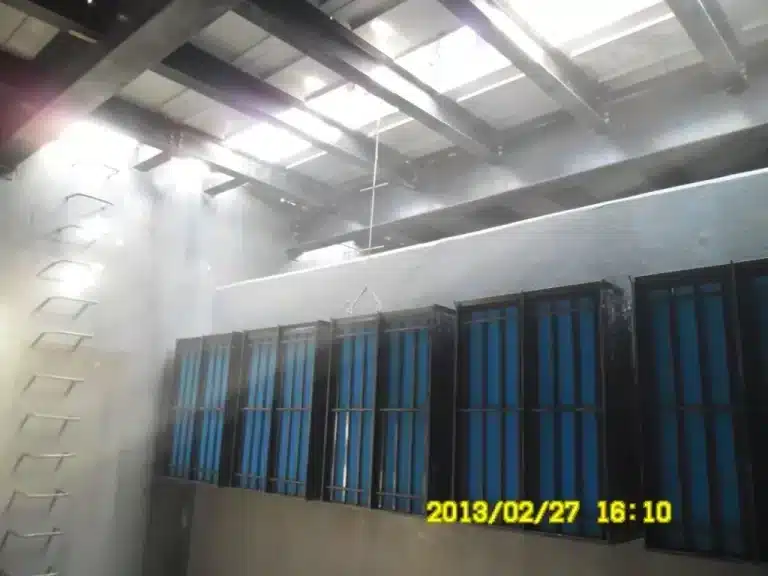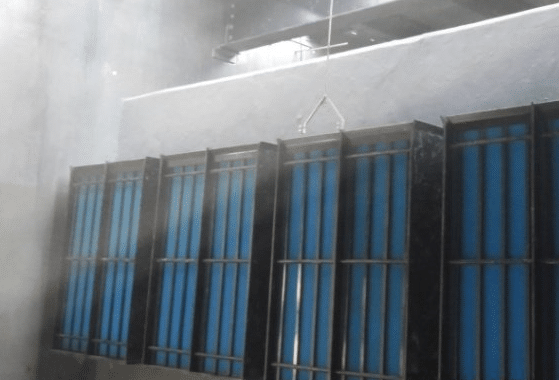Ever wondered how Arkansas keeps its groundwater safe? The secret is in its strong rules for below ground oil water separators (OWS). These systems are key to keeping Arkansas’s environment clean.
Arkansas takes water quality seriously. It has strict rules for onsite wastewater systems. These rules were made by the State Board of Health in 1977. They make sure below ground OWS keep oil and water apart, protecting soil and groundwater.
For businesses and homeowners, knowing these rules is important. Arkansas has clear guidelines for permits and where systems should be placed. This helps keep the environment safe and ensures everyone follows the law.
Key Takeaways
- Arkansas Below Ground OWS regulations are set by the State Board of Health
- Act 402 of 1977 establishes minimum standards for onsite wastewater systems
- Freytech Inc. Below ground OWS are vital for effective oil and water separation
- Proper design and construction in suitable soils are mandatory
- Permitting and system location guidelines must be followed for compliance
Introduction to Below Ground Oil Water Separators in Arkansas
Below Ground OWS are key in Arkansas’ wastewater treatment. They remove oil and contaminants from water before it goes into the environment or treatment plants. Arkansas has strict rules for these separators to protect water and keep the ecosystem balanced.
Definition and Purpose
These devices are set underground and use gravity to take out oil, grease, and dirt from wastewater. They are crucial for places like car washes, vehicle repair shops, and factories that deal with oily water. By cleaning the water, they keep it safe for use and meet discharge rules.
Importance in Wastewater Management
In Arkansas, managing wastewater well is key to protecting rivers, lakes, and underground water. Below Ground OWS play a big part in this, easing the load on treatment plants and cutting down on harm to the environment. They’re especially crucial in places where the underground water is sensitive, as contamination could spread widely.
Regulatory Framework
The Arkansas Department of Environmental Quality makes sure Below Ground OWS are used right. Places need the right permits and must follow certain rules for design and upkeep. These rules help make sure wastewater treatment meets state and federal environmental goals, keeping Arkansas’ natural resources safe for the future.
Arkansas Below Ground OWS: Types and Components
Arkansas uses different oil water separator models to handle wastewater. These systems vary in materials and designs to fit different needs. Let’s look at the main types of below ground oil water separators used in the state.
Precast Concrete Models
Precast concrete oil water separators are common in Arkansas. Models like the SOCMP and CMP have many compartments and use coalescing media. They separate oil from water with internal baffles and pipes. These systems also have maintenance alerts to keep them working right.
Fiberglass Model
The CMPF model is a light fiberglass interceptor. It’s perfect for places that need tank pumping now and then. This separator uses coalescing media for better separation. Its design makes it simple to set up and keep up in Arkansas.
Steel Basin Model
The AQS model has a steel basin that can be single or double-walled. It’s a flexible oil water separator for direct burial or standing alone. Like others, it has coalescing media and a maintenance alert system. The steel build means it lasts a long time and works well.
These oil water separator models follow Arkansas’ rules and meet various needs. They are key to keeping the state’s water safe from oil pollution.
Design and Installation Considerations
Proper OWS installation and wastewater system design are key in Arkansas. The state has rules for onsite wastewater systems, like minimum lot sizes and soil types. These rules help make sure the system works well and protects the environment.
When setting up an OWS, think about where to put it. Arkansas says to keep wastewater systems away from high water marks and lakes. This keeps water safe and helps manage the aquifer well.
Designing the system means figuring out how much wastewater it will handle. Arkansas has rules on septic tank sizes based on the facility’s type and size. Getting the math right is crucial for a system that works well and follows state rules.
Doing environmental site assessments is a big part of planning. These checks spot potential problems and make sure you follow local laws. Having a licensed installer put it in right ensures it meets Arkansas environmental standards and works well for a long time.
Permitting Requirements for Below Ground OWS in Arkansas
Putting in a below ground oil water separator in Arkansas means you must follow strict rules. These rules help keep our water clean and make sure we follow environmental laws.
NPDES Permit Application Process
Getting a National Pollutant Discharge Elimination System (NPDES) permit is key for an OWS. Owners must fill out Form 1 and other EPA forms based on their discharge. They need to give details about their facility, where the discharge will go, and how they treat the water.
Required Documentation and Forms
Applicants must give exact location details, info about the receiving stream, and where they’ll monitor the water. They also need to include water quality tests and models of how pollutants move. These help the authorities see how the OWS might affect the environment.
Compliance with Arkansas Department of Environmental Quality Regulations
The Arkansas Department of Environmental Quality checks if you’re following the rules. This means having the right wastewater operator certification and sticking to discharge limits. Regular checks and reports are needed to keep the OWS up to state standards.
These separators are crucial in storm water systems. They process runoff to meet the US EPA’s Clean Water Act standards. With effective oily water treatment, facilities protect the environment and dodge big fines.










